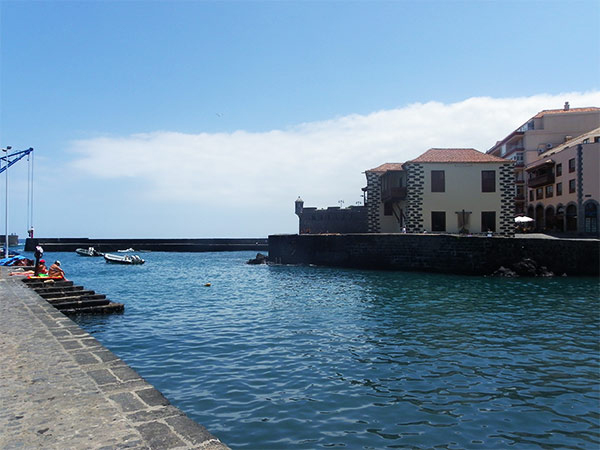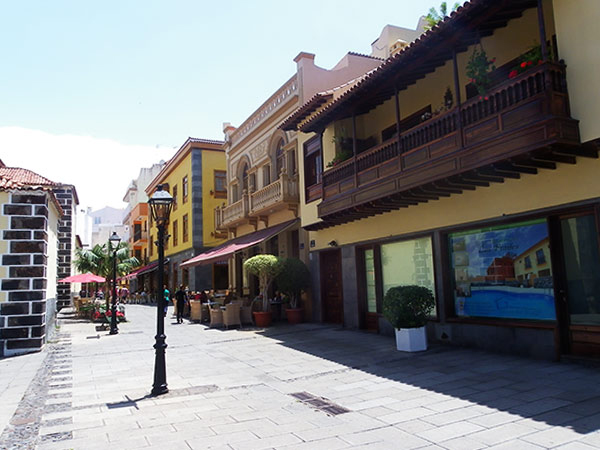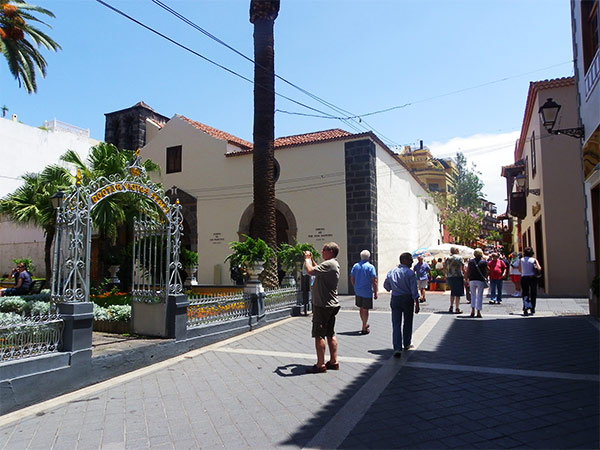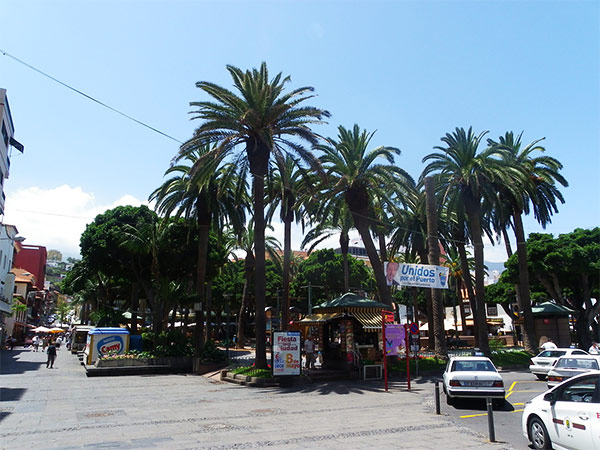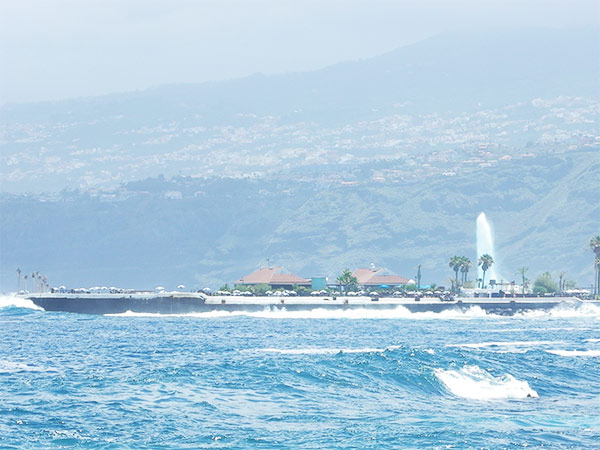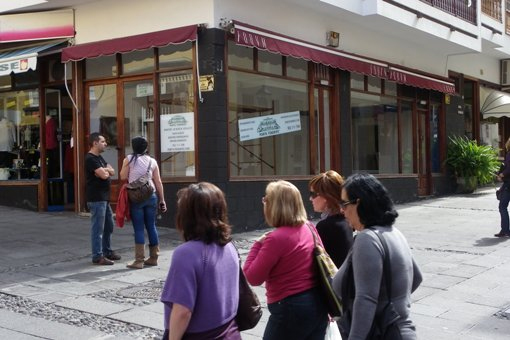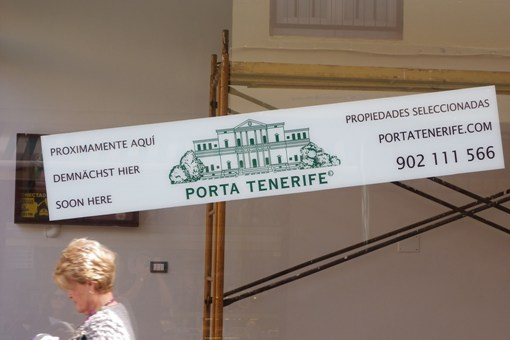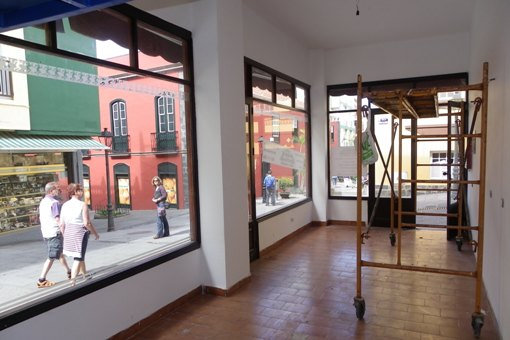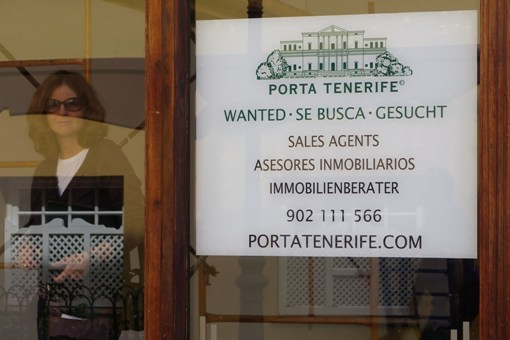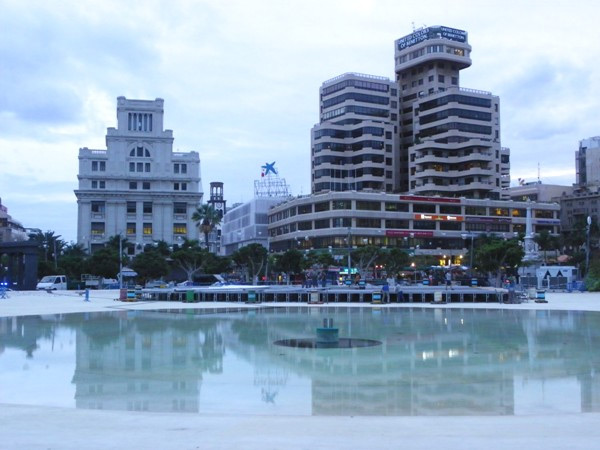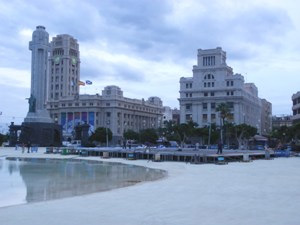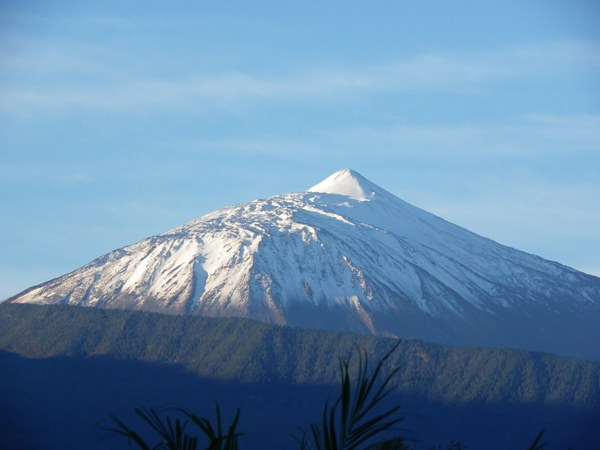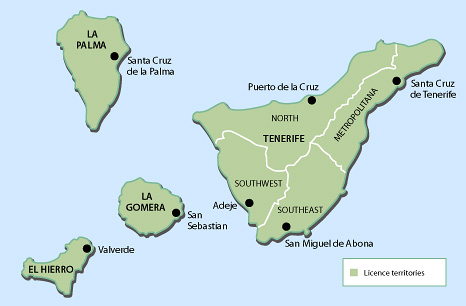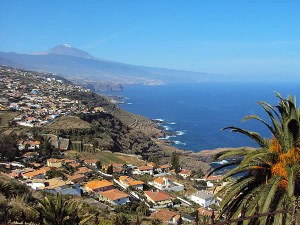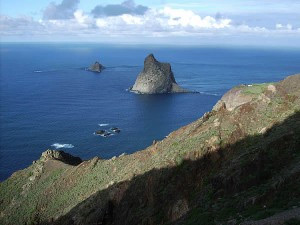After the “vino blanco” sprinkled over the bream (la dorada) I have yet again appetite enough to go for another exploration trip. To find this, I do not need to go far away: the jewel is at the port city. Before me appears the oldest surviving mansion of Puerto de la Cruz, the building “Casa de la Aduana”. This custom-house was built in 1620, where the incoming ships had to pay the arranged custom. Of course, today the harbor duty is no longer levied, but tourists can spend some of their extra money in beautiful and good-quality artworks and bring home a nice canarian souvenir.
Passing the “Lonjas”, earlier known as “stock exchange” for fish and other market items we come to the “Plaza de Europa”. This spacious square is dominated by the presence of the Town Hall, the “Ayuntamiento”, proudly wearing the coat of arms at the entrance portal. It is questionable whether if the six black, cast iron cannons from the 18th century served to give the “Plaza de Europa” -newly created in 1992- the aura of a fortress that could give the “alcalde” (the mayor of the city) protection at a covering fire emergency.
Hustle and bustle in the old city
After such a long hike along the roaring sea we now turn our steps a few hundred meters away from the sea towards the old town. Here, life is even more lively and colorful than at the port. In addition to the great number of people and sellers there are, above all, stylish old Canarian manor houses with their wide overhanging wooden balconies and the intimate courtyards that grab the attention of the tourists.
It should not be overlooked the old pedestrian zone of the “Hotel Marquesa”, which I inspected briefly. I liked it, especially the courtyard with colored tiles on them (called “azulejos”) and flower pots sweeping fan palms. Around the courtyard runs a wooden beam, from which the solid and comfortable rooms are reached. The Count of the city built this palace in 1712 for a noble family, and later in 1884 opened as a hotel for tourists.
Worth-seeing mansions and palaces
In the “Calle Quintana”, the old manor houses have been reclassified today as shops and restaurants. Next to it, we reach to “Inglesia de San Francisco”, which contrasts with the green square. After all, this is not a surprise, since the church of St. Francis was built in 1599-1608, being the oldest religious building in the city. However, only a few minutes away is located the “Inglesia de la Señora de la Peña de Francia”, considered significant art history. The church of “Nuestra Señora de los Dolores”, built from 1681 to 1687, has inside an impressive baroque altarpiece made by Luis de la Cruz which occupies the entire front part of the altar to the ceiling. In addition, there are two more statues, the “Virgen de los Dolores”, and “Santo Domingo”, both by Luján Pérez.
We allow ourselves to continue with the group of visitors to the front of “Casa Iriarte”. This is the mansion where Tomás Iriarte was born in 1751, one of the most respected poets of the 18th century in Spain. With the publication of his “Fábulas Literarias” he attempted to help the Spanish countrymen to acquire a better literary taste in the style of the Enlightenment. As a playwright he wrote plays in which the idle nobility blamed and praised the hardworking citizens. Today you can enjoy the mansion’s architecture, Canarian style, of carved wooden balconies and patio. Those who enjoy embroidery, oil paintings and pastel colored paintings, can indulge in retail therapy here.
Directly opposite to it stands the “Torre Ventoso” in the heights, belonging to the same Palace. In this “Windy Tower” formerly wealthy nobles and merchants watched from here the incoming goods and the ships in the harbor. These towers or fortifications that rise above from the myriad of noble houses belonged to families such as Gimignano from Tuscany and the old imperial city of Regensburg.
But now in the late afternoon, and after having seen so many attractions, the mind relaxes and the body will be refreshed. This is possible thanks to an espresso in one of the cafeterias found in the centre of the old town on “Plaza del Charco”. With a coffee and the sounds of street musicians playing a bolero I’m on my way to spot other attractions of the city.
On the way back to the beach promenade, I arrive to the Chapel of San Telmo. From the outside it is seen a whitewashed, inconspicuous chapel, one that enjoys great reputation among sailors and fishermen, since the figure of “San Pedro Gonzalez Telmo” helps people on the high seas and wild storms. The German people of Puerto de la Cruz do an spiritual speech on Sunday in the sermon of comfort and confidence.
Further along the beach promenade to the sea extends the real main attraction of the city, the “Costa de Martiánez”. A native of Lanzarote, internationally praised architect César Manrique created a bathing paradise. Between Indian laurel trees, Mediterranean palm trees and exotic plants, an acuatic park with artificial lakes, islands of black lava and green resplendent parking zone extends.
Green oasis in Puerto de la Cruz
I walk a little along the lava coast of Playa de Martiánez, where some daring young boys dive into the sea spray. I must hurry, in order to get a lift in taxi to the famous “Jardín Botánico” before its closure at 19:00. The Spanish King Charles III made the Botanical Garden here, to accustum the tropical plants to the Spanish climate. However, this test shall be regarded as a failure for the mainland Spain. With the Canary Islands climate and the botanical garden well maintained, there you can see tropical plants like orchids and coffee plants, and exotic tree species such as pepper and mango trees and tulips. An enjoyable walk on a gravel shore with fountains and flower beds makes your time fly away.
So today I did not manage to see the main attraction of the island, the most visited zoo in Spain, the “Loro Parque”. The parrots, dolphins, sea lions, orcas, killer whales, and the monkeys, they all have to wait for me until tomorrow, when I’ll pay a visit. Once there I will applaud to them and their art pieces in the amphitheater.
